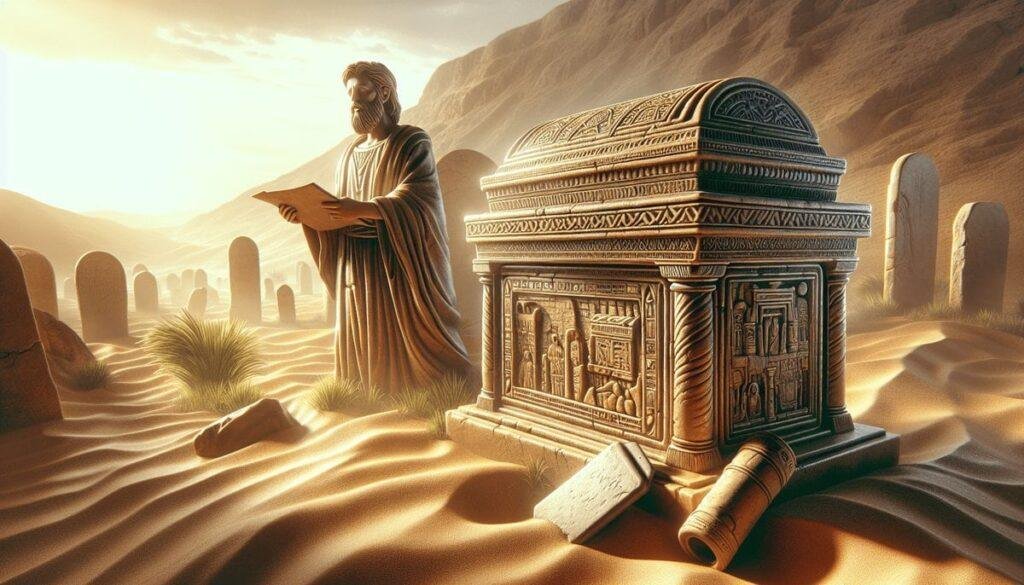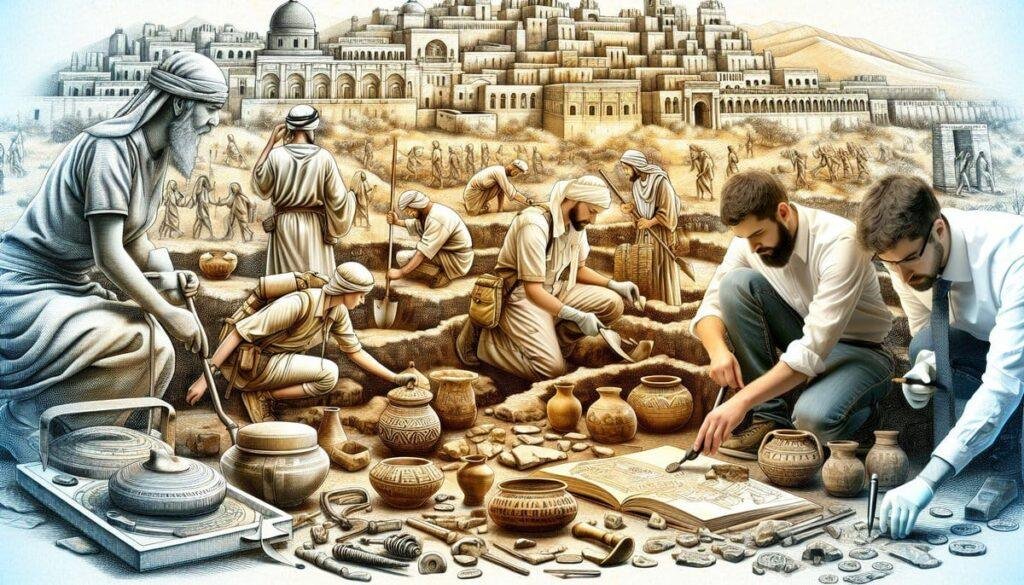What do you think of when you hear the term “Ark”? Perhaps you picture a large boat bringing animals together during a catastrophic flood, or you may think of the Ark of the Covenant, a vessel of sacred significance in biblical history. Regardless of which Ark comes to mind, the journeys they undertook weave a rich tapestry of cultural, theological, and historical significance. Let’s embark on a fascinating journey into the adventures of Ark’s travels, particularly as it connects to the outlying territories—and we’ll do it with an eye on credible research and insights.
Understanding the Ark of the Covenant
The Ark of the Covenant isn’t merely an ancient artifact but a symbol of divine covenant and presence. It’s said to represent God’s promise to the Israelites, signifying protection and guidance. Historically, the Ark was constructed following specific instructions given to Moses on Mount Sinai, detailed in the Book of Exodus.
The Design and Purpose of the Ark
The Ark was meticulously crafted from acacia wood, overlaid with gold, and adorned with cherubim. It contained the two tablets of the Ten Commandments, Aaron’s rod, and a jar of manna, underscoring its importance as a tangible representation of God’s covenant with his people.
- Dimensions and Materials
- Length: 3.75 feet (1.1 m)
- Width: 2.25 feet (0.68 m)
- Height: 2.25 feet (0.68 m)
These proportions are quite telling; they suggest that the Ark was not only designed for symbolic representation but also for practical transportation during the Israelites’ wanderings.
The Significance in Biblical Context
The Ark played a crucial role throughout biblical narratives. It was present in pivotal moments, such as the crossing of the Jordan River and the battle of Jericho. Its presence was not just a physical representation but a spiritual one; it was believed to embody God’s presence among the Israelites.
The Historical Journey of the Ark
Ark’s travels present a fascinating story, navigating through ancient civilizations, wars, conquests, and even temple dedications. To follow the Ark is to follow the history of a people grappling with their identity, faith, and challenges.
From Egypt to the Promised Land
The journey of the Ark begins with the Exodus, where the Israelites escaped slavery in Egypt. As they wandered the desert, the Ark was carried ahead of them, marking their progress and reinforcing their covenant with God.
- Key Events on the Journey
- The parting of the Red Sea
- The giving of the law at Mount Sinai
- The encampments in the wilderness
These moments filled with divine intervention and guidance emphasize the Ark’s role as a beacon of hope and assurance for the Israelites.
The Conquest of Canaan
As the Israelites entered into Canaan, the Ark accompanied them in significant battles, culminating in events like the fall of Jericho. The march around the city, with the Ark leading the way, serves as an excellent example of faith in action.
It’s worth pondering: Was it merely the Ark’s physical presence that led to these miraculous victories or something deeper, a culmination of faith and divine will?

Archaeological Perspectives
Moving beyond scripture, let’s consider the archaeological findings that bring a more substantial understanding of the Ark’s journeys. Scholars have conducted significant excavation projects, revealing ancient artifacts and writings that provide context to biblical narratives.
Discoveries that Enhance Understanding
The Tel Dan Stele: This archaeological find contains an inscription referencing the “House of David,” lending historical credence to the biblical narrative and the reign of King David, during which the Ark was relocated.
The Shrine of Shiloh: Excavations at this site unearthed what is believed to be the location where the Ark resided for a substantial period while the Israelites settled in the Promised Land.
Both findings add historically rich layers to the understanding of the Ark’s travels and its impact on the Israelite identity.
The Ark’s Influence on Culture and Religion
The impact of the Ark extends beyond its immediate biblical context. Throughout history, it has captured the imagination of countless individuals across various cultures and religions, shaping art, literature, and thought.
Theological Reflections
In Christian theology, the Ark has been interpreted as a precursor to the Virgin Mary, who bore the embodiment of divine presence in Jesus Christ. This reflection yields deep insights regarding faith, devotion, and the very essence of what it means to carry the sacred.
Artistic Representations
Art inspired by the Ark ranges from Renaissance painting to contemporary art installations, embodying its significance through various tangible forms.
- Famous Examples:
- “The Last Judgment” by Michelangelo portrays Christian themes that echo the Ark’s original design and purpose.
- Modern exhibitions often invoke the Ark’s essence to explore themes of spirituality and commitment.
These interpretations demonstrate the Ark’s lasting influence on human creativity and spiritual expression.

The Mystery of the Ark’s Disappearance
One of the most captivating narratives surrounding the Ark is its eventual disappearance, often tied to conjecture and legend. Historical accounts suggest the Ark was housed in Solomon’s Temple until the Babylonians destroyed the temple in 586 BCE.
Theories about Its Fate
- Hidden in the Catacombs? Some stories claim that the Ark was hidden away by priests in secret tunnels beneath Jerusalem before the Babylonian conquest.
- Transported to Ethiopia? Ancient Ethiopian traditions suggest that the Ark was taken to the Church of St. Mary of Zion, where it is still believed to reside today.
Each theory brings with it a tinge of intrigue and curiosity about the fate of this sacred object and its enduring legacy.
Modern Perspectives on the Ark
In contemporary times, the Ark of the Covenant serves as more than just a religious symbol. It has permeated popular culture, represented in films, literature, and even conspiracy theories surrounding its existence.
The Ark in Popular Culture
Movies like “Raiders of the Lost Ark” and literary works that reference the Ark showcase its allure and mystical qualities. These interpretations often play fast and loose with historical accuracy but capture the imagination of audiences around the globe.
Table of Popular Culture References to the Ark
| Medium | Title | Description |
|---|---|---|
| Film | Raiders of the Lost Ark | An adventurous quest to find the Ark before the Nazis. |
| Literature | Indiana Jones novels | Expanded universe stories surrounding the Ark and its mysteries. |
| Video Games | Tomb Raider series | An exploration of relics, including the Ark, in fictional adventures. |
Impact on Modern Spirituality
Today, many faith traditions continue to reflect on the significance of the Ark. Whether viewed through a historical or metaphorical lens, it reminds believers of the call to uphold divine promises and maintain sacred relationships.
Archaeological Legitimacy and Its Challenges
While archaeological findings lend credibility to biblical accounts, the search for the Ark continues to face challenges. The complexities of ancient history, coupled with the passage of time and cultural transformations, make it difficult to ascertain definitive truths.
Preservation of Sites: Many historical sites face threats from urban development and environmental factors, complicating the study of such an important artifact.
Historical Discrepancies: Conflicting narratives between archaeological evidence and biblical accounts can lead to debates about the actual historical journeys of the Ark.
Summary of Ark’s Travels
The journey of the Ark of the Covenant is an intricate blend of faith, history, and culture. It navigates through a vast territory, both geographically and temporally. Understanding its travels offers insights not only into ancient practices but also into the enduring human search for meaning and connection.
Modern perspectives encourage an engagement with these themes that remain relevant today. The memory of the Ark invites you to reflect on your own beliefs, traditions, and the promises that shape your journey through life.
Inviting Ongoing Reflection
As you consider this rich narrative, challenge yourself to think about how the stories and symbols of the past influence the present. How do ancient covenants resonate in a modern world searching for meaning and connection?
Royal Chronicles invites you to keep the conversation alive about the treasures of the past, ensuring they continue to inspire discussions for generations to come.


